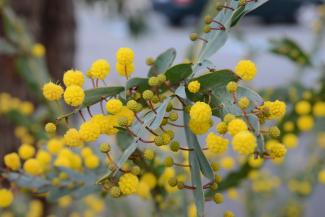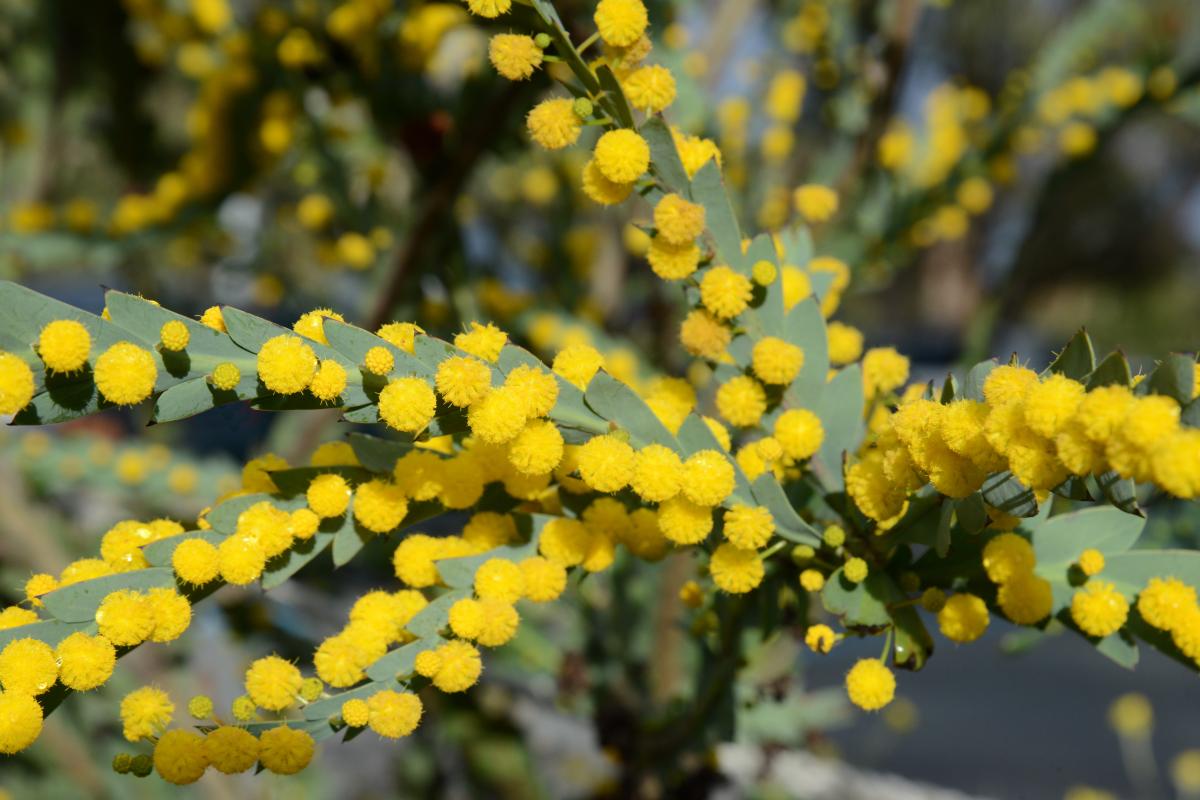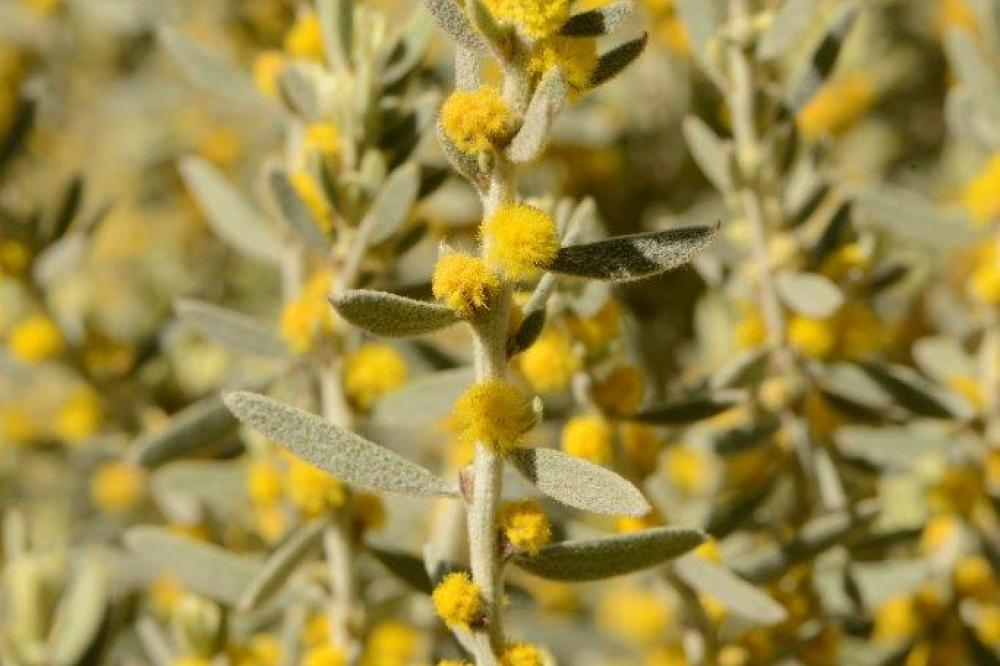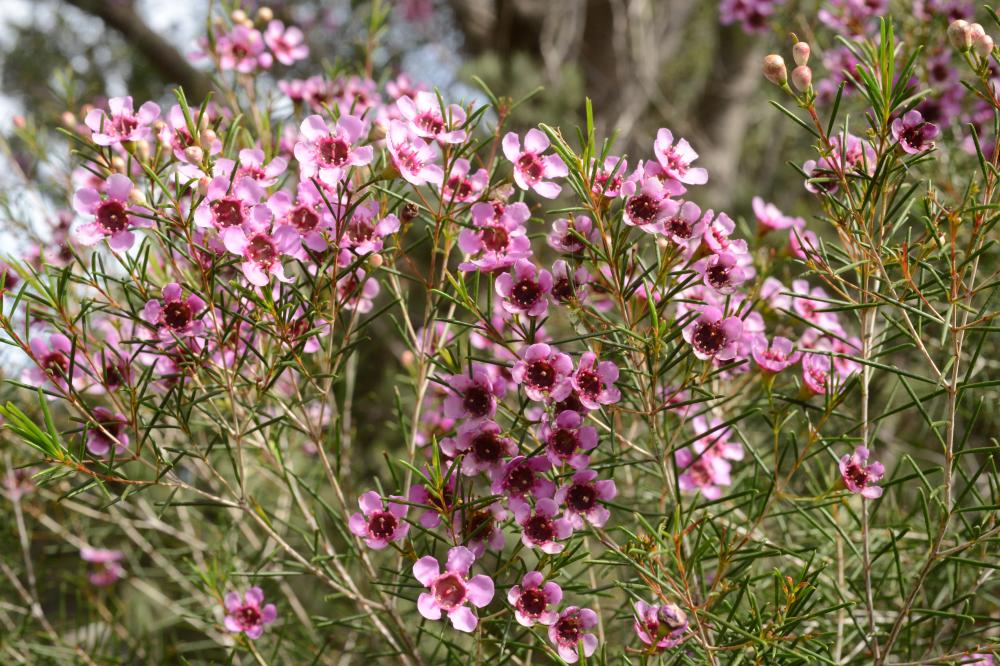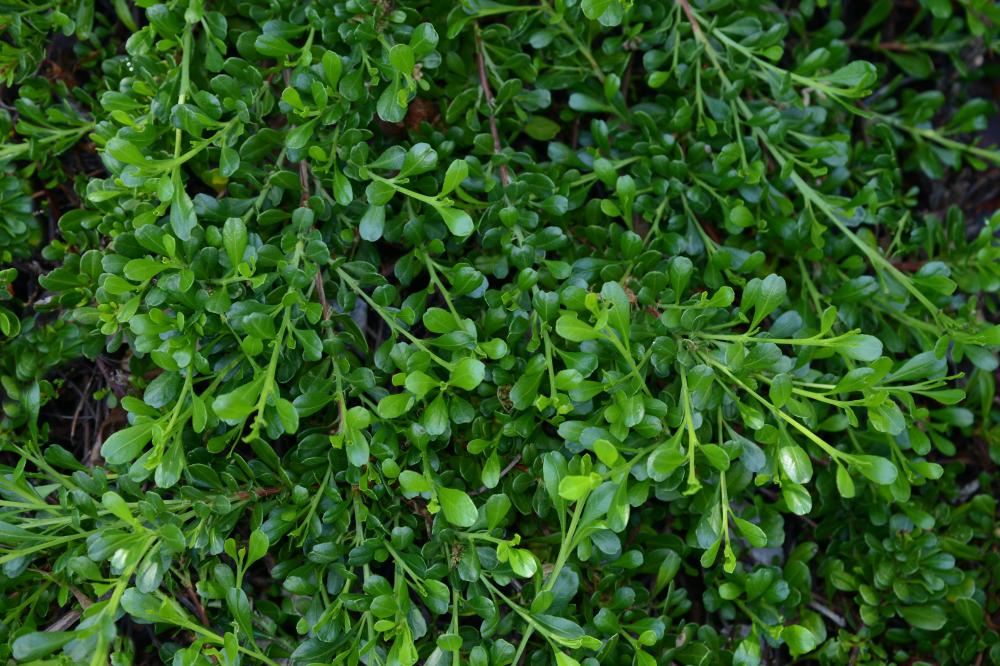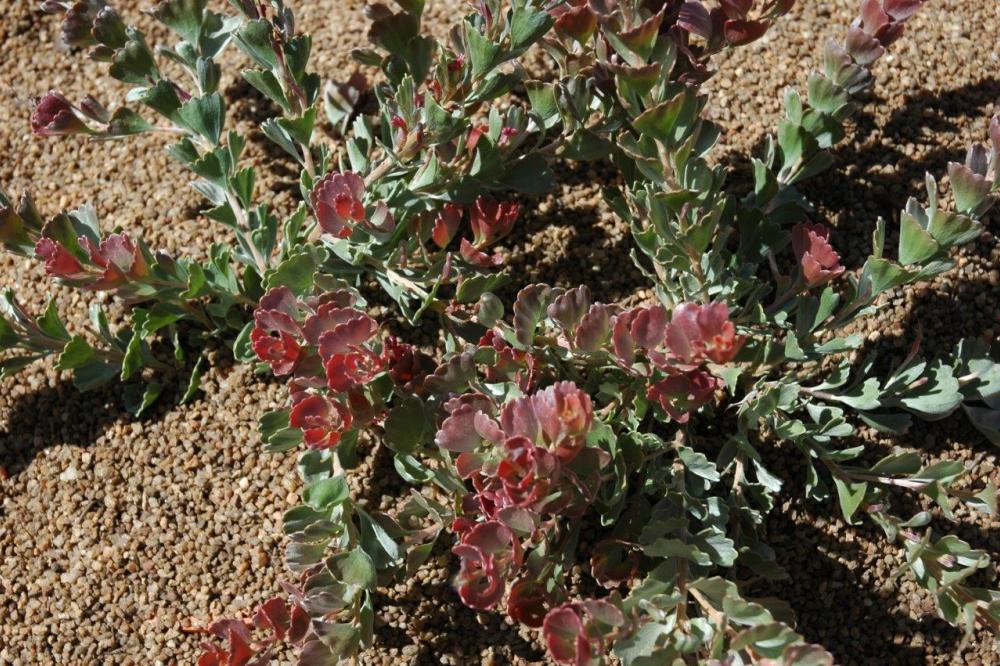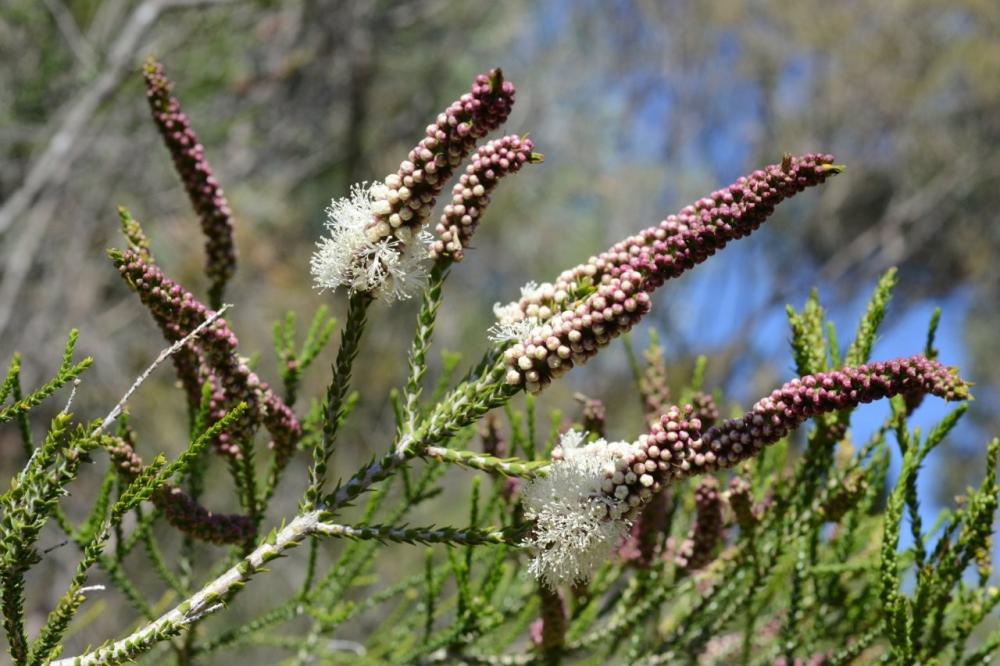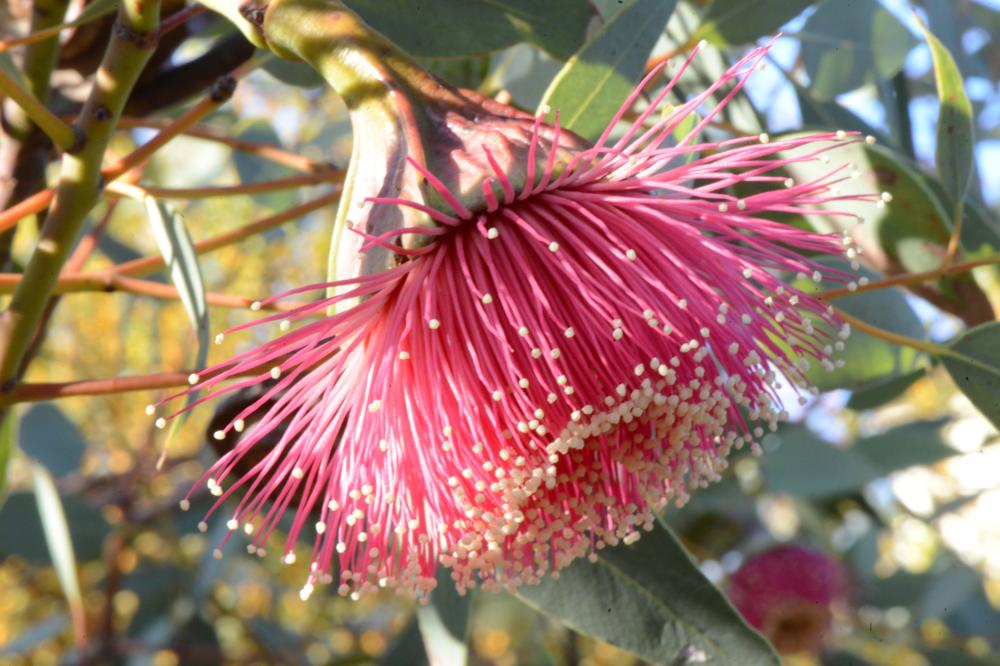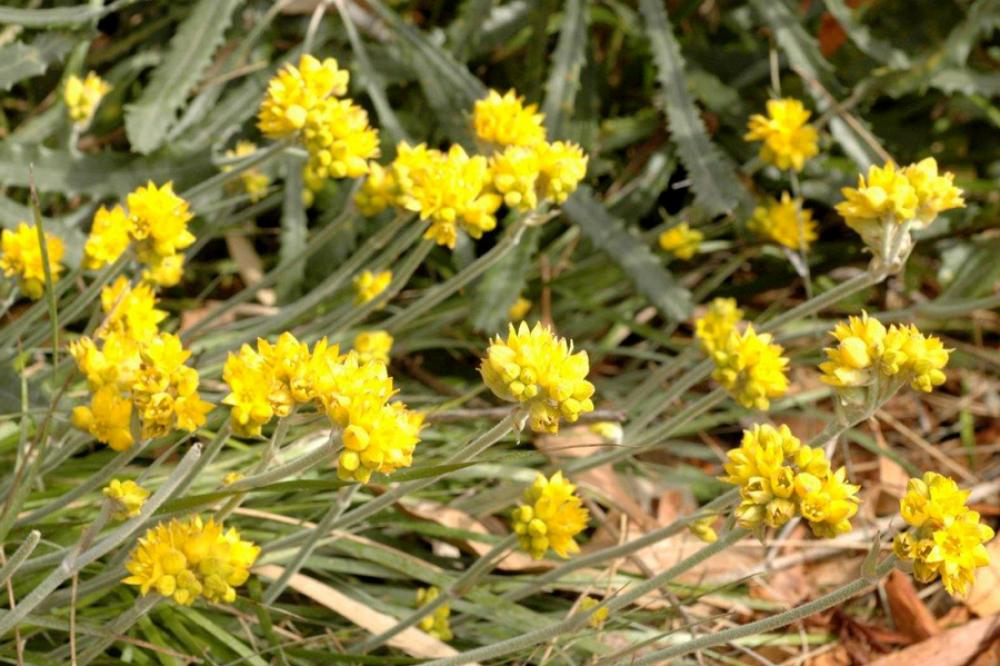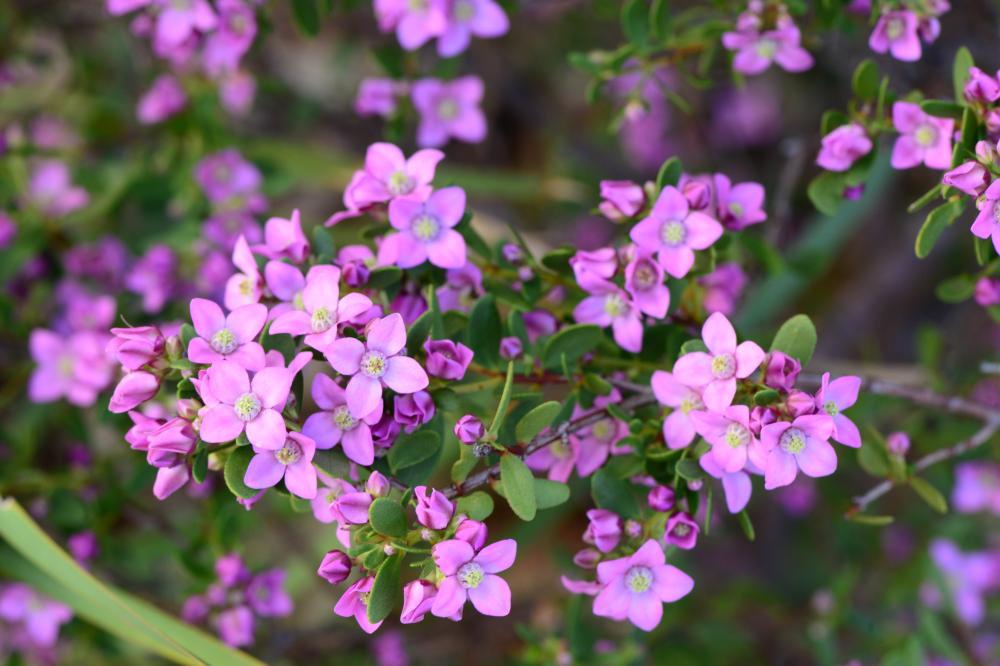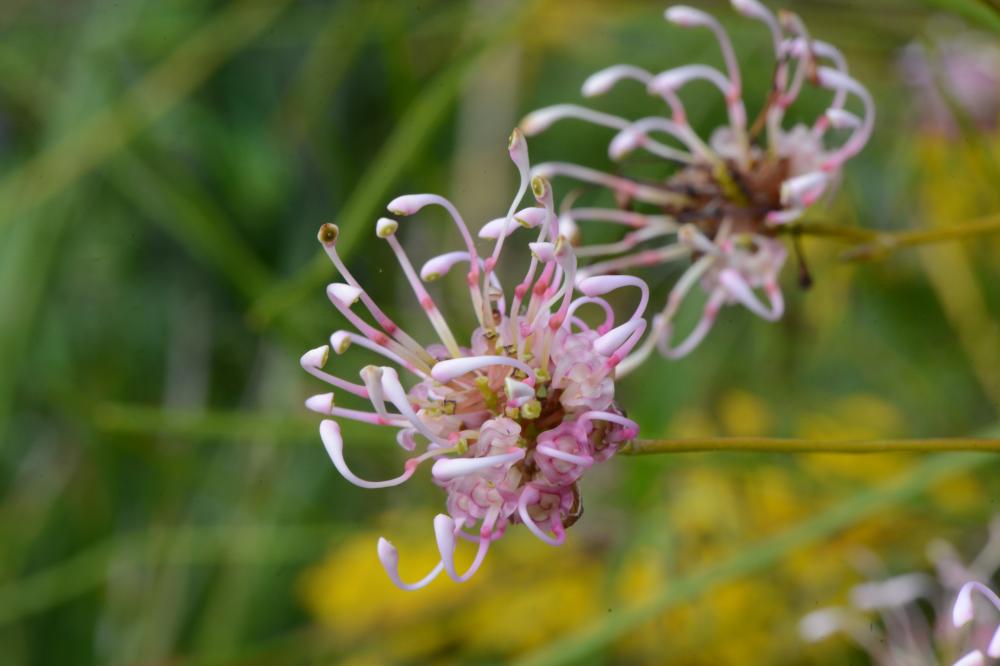Acacia glaucoptera
Flat Wattle
This unusual acacia variety is grown for its striking blue-green wing-like foliage, with attractive purple-red new growth.
From late winter to early summer, golden-yellow globular flowers grow close to and along the stems.
The Flat Wattle is an attractive small shrub with a rounded, spreading habit growing to approximately 1.5 m high and 2 m - 3 m wide. Instead of leaves, this species has modified leaf stalks (phyllodes) that perform all the functions of leaves.
Grow it at home
- Plant in a sunny to part-shaded position during autumn and winter months.
- Prefers well-drained soils
- Apply slow-release native plant fertiliser at the time of planting and annually as required in the spring months
- Once established, little water is required. Mulching around the root zone area will conserve moisture
- Light pruning after flowering may be beneficial, especially the removal of any dead or dying branches
Also known as Clay Wattle, this species grows naturally in clay and gravelly lateritic soils.
Find it in Kings Park
The Flat Wattle can be seen in the Western Australian Botanic Garden entrance beds, Acacia garden, Northern Wheatbelt garden, Wadjuk Car Park and in front of the Botanical Cafe.
Out in the wild
In its natural range, this wattle can be found growing in the Avon Wheatbelt, Esperance Plains, Jarrah Forest and Mallee regions of the south west of Western Australia.
